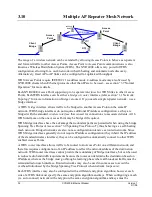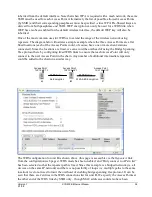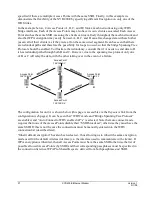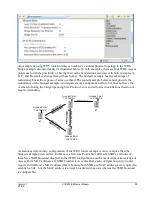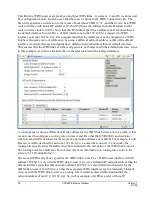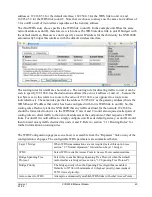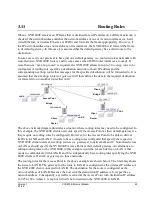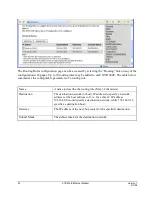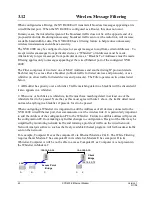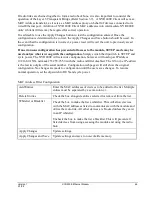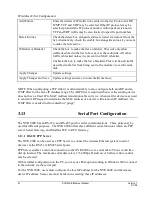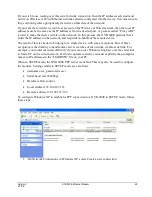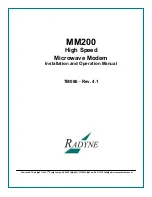
33
XYR400E Ethernet Modem
Version 1
5/1/08
Power Level
The RF power level is shown in this field. This value is read only and
cannot be altered.
Data Rate
The radio baud rate in Mega (million) bits per second (Mbps) for point
to point radio transmissions. The default value is Auto.
Basic Rate
The radio baud rate in Mega (million) bits per second (Mbps) for
multicast messages and management frames. These frames include
beacons, authentication, association, etc. The default value is 2Mbps.
Channel
Radio Channels 1 to 11 may be configured at the Access Point.
Refer Section 3.2. By default radio channel is set to 3.
Beacon Interval
This interval is the period between beacon transmissions sent by an
Access Point. The default value is 100 milliseconds, and it may be
adjusted from 50 to 4095 milliseconds.
RTS Threshold
RTS frames can be used to help avoid radio collisions between two
stations that cannot directly hear each other. Any frame larger than
RTS Threshold bytes will be preceded by an RTS message.
Fragmentation Threshold
STA only. The maximum transmission unit (MTU) of data over the
radio. If more than this number of bytes is input into the module, it
will be transmitted in more than one message (or fragment).
Fallback Probation
Counter
When one of the fallback data rates is selected, the radio data rate
may be upgraded to the next highest rate after this many consecutive
successful transmissions. The default value is 10.
Fallback Probation Timer
When one of the fallback data rates is selected, the radio data rate
may be upgraded to the next highest rate after this amount of time is
spent at a lower rate. The default value is 20 seconds.
Disable SSID broadcast.
This should be used to prevent unwanted eavesdroppers from detecting
the radio network System Address (SSID) by passively listening to
beacon transmissions from the Access Point. When disabled, Access
Points will not transmit the System Address openly in Beacon
messages. This is particularly useful in unencrypted radio networks.
Disallow Probe Requests
without correct SSID
This should be used to prevent unwanted users from detecting the
radio network System Address (SSID) actively by sending a probe
request to the Access Point. When Disallowed, if the correct System
Address is not supplied in the probe request, the Access Point will not
respond. This is particularly useful in unencrypted radio networks.
Save Changes
Save changes to non-volatile memory. Changes will not take effect
until module is reset.
Save Changes and Reset
Save changes to non-volatile memory and reset module

















